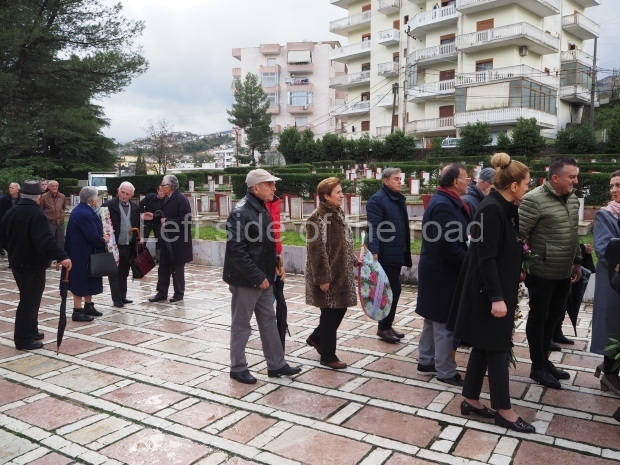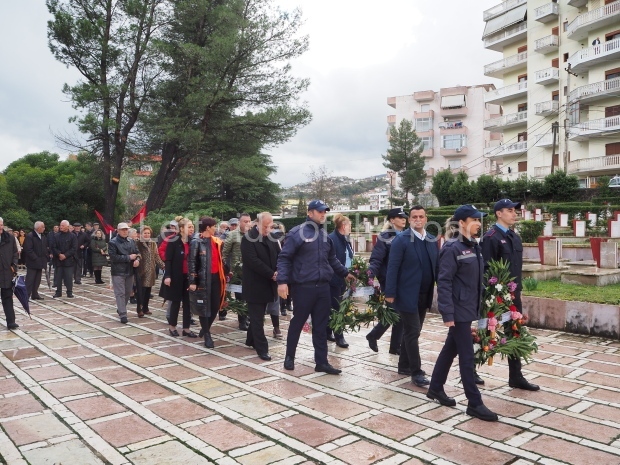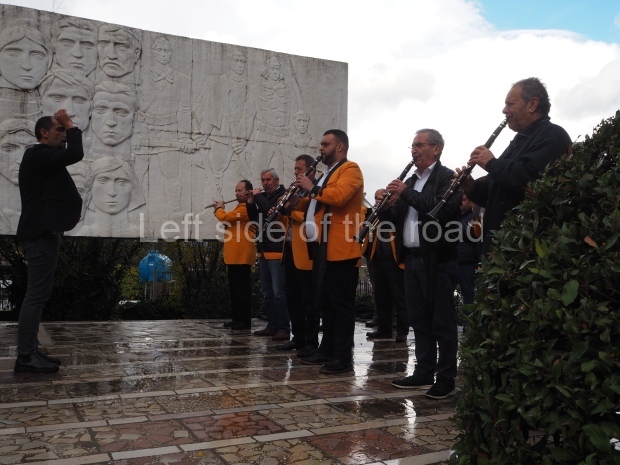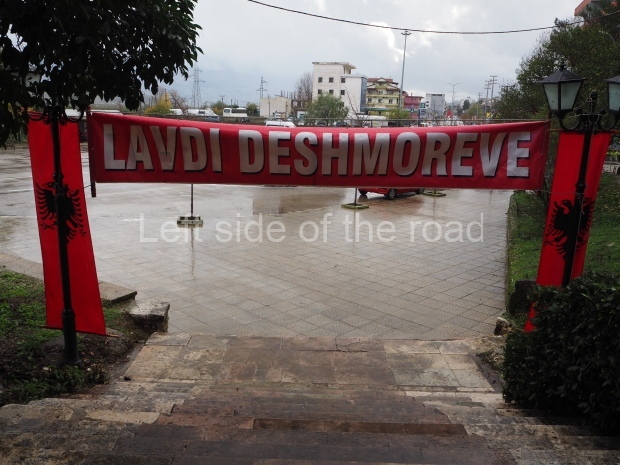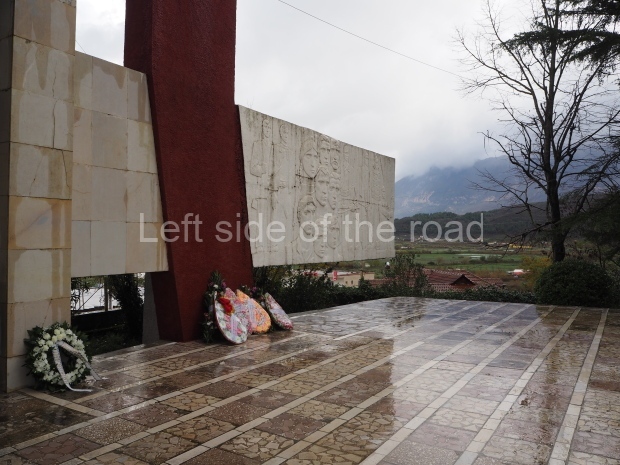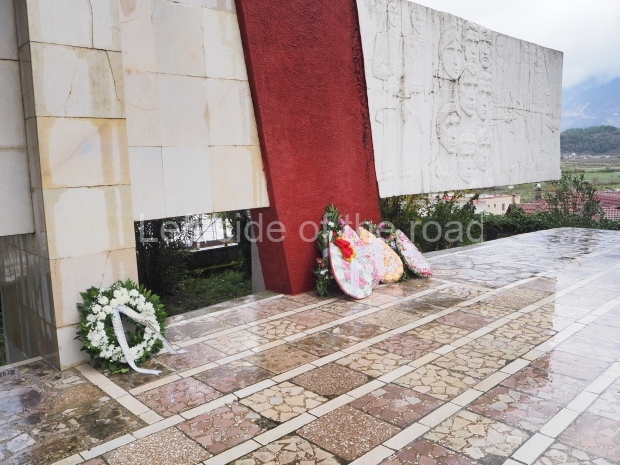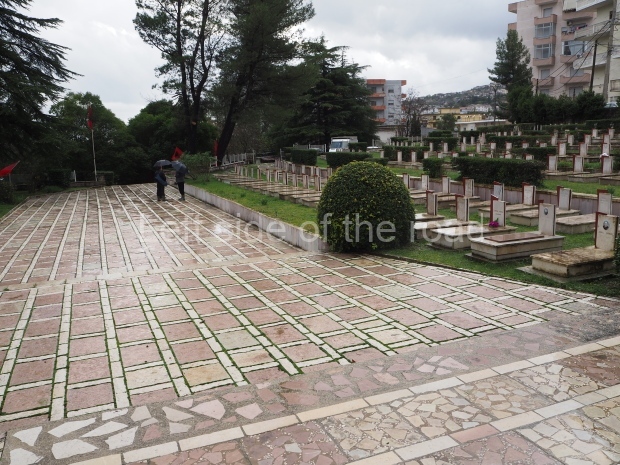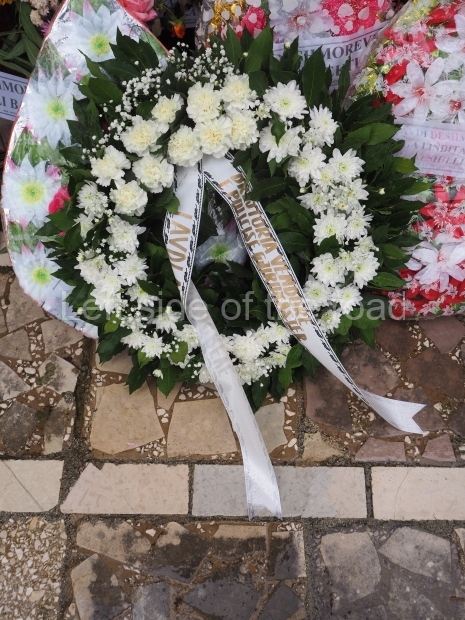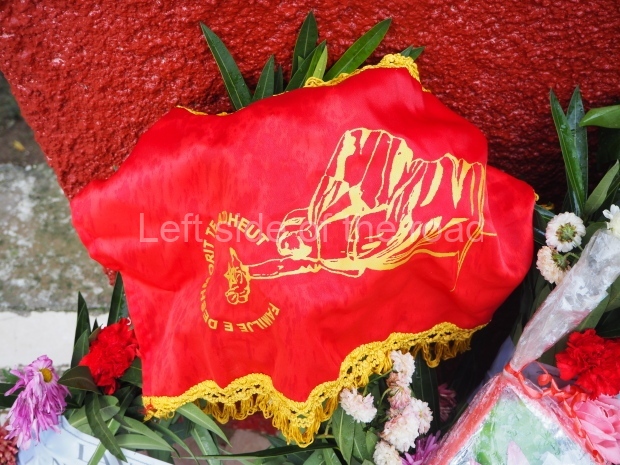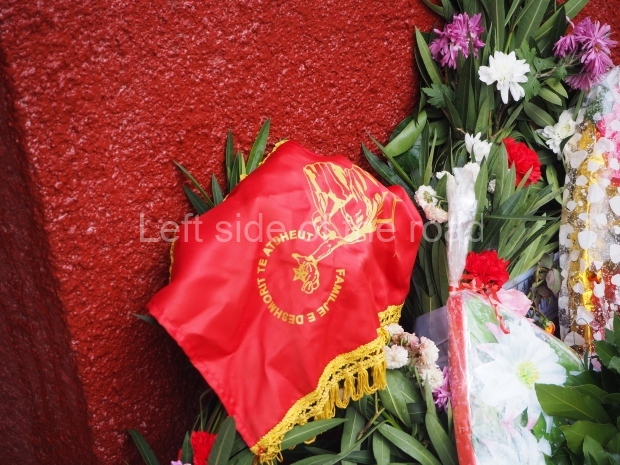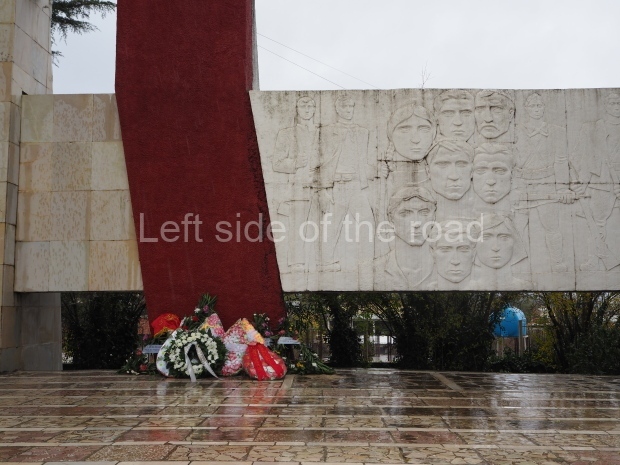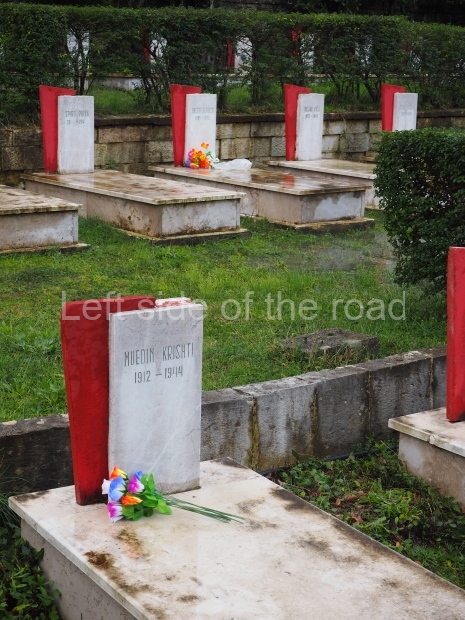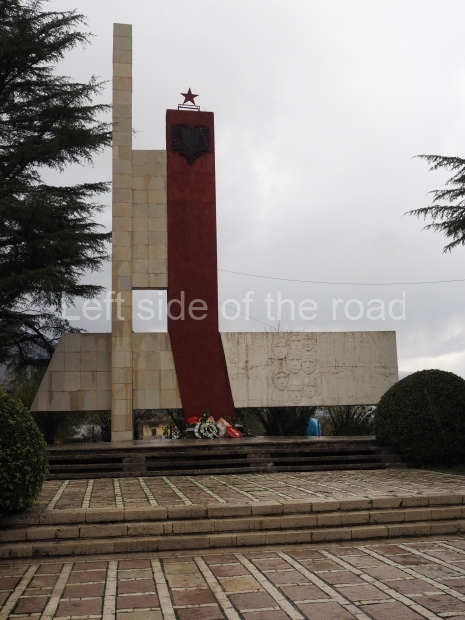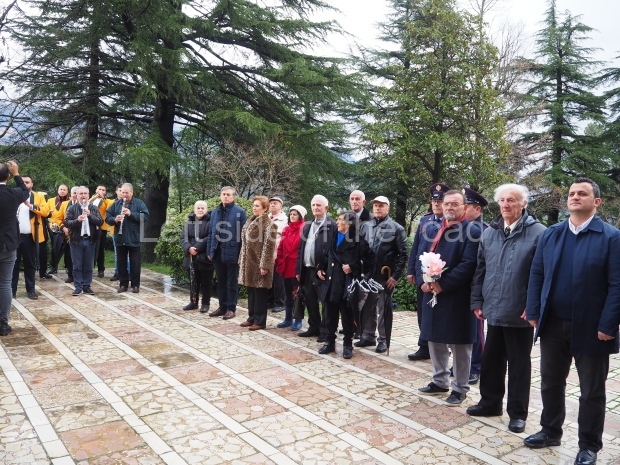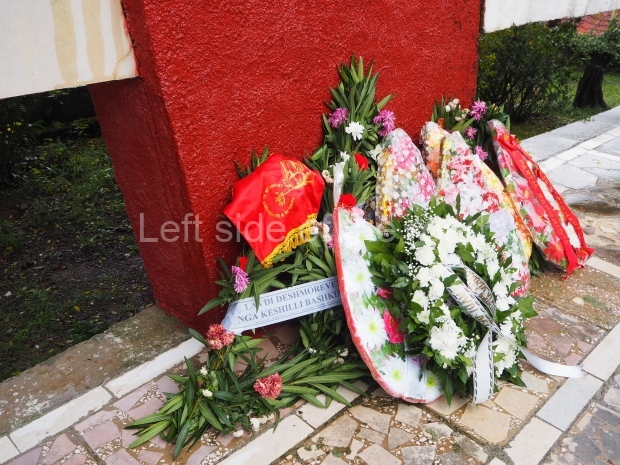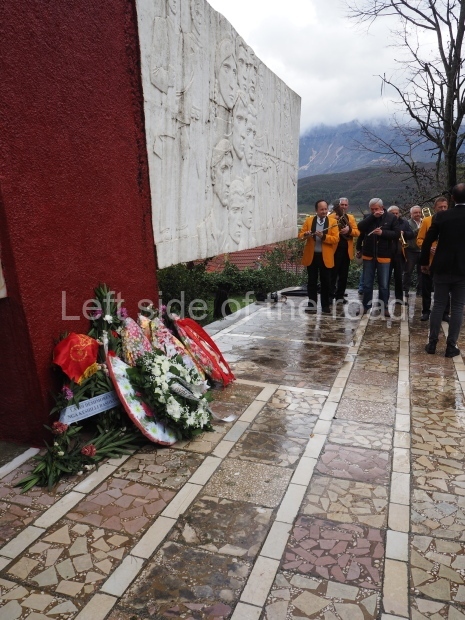More on the ‘Revolutionary Year’
Ukraine – what you were’nt told – 2022
Ukraine – what you’re not told – 2023
5th March – anniversary of the death of Comrade Stalin
On 6th March 1953 Moscow Radio announced ‘The heart of Josef Vissarionivich Stalin, Lenin’s comrade in arms and the genius-endowed continuer of his work, has ceased to beat.’
The same day the following article, written by a prominent leader of the Communist Party of Great Britain (CPGB), was published in the Daily Worker.
Stalin: A great servant of mankind who belongs to the ages
Josef Vissarionivich Djugashvili (Stalin) was born in the little Georgian town of Gori on 21 December 1879.
His father was a shoemaker, who put him to the local church school in 1888, and to the theological seminary at Tbilisi (Tiflis) in 1894.
After studying in secret Marxist groups (formed by students and Russian Marxists in exile), Stalin joined the first Georgian social-democratic organisation in 1898, and helped to set up illegal Marxist groups among railway shopmen, writing leaflets and organising strikes.
In 1899 he was expelled from the seminary, on hints from the police, and began earning his living by giving lessons and taking readings at the Tiflis observatory, while continuing intense secret activity among the workers.
As leader of the revolutionary minority in the Georgian social-democratic organisation, Stalin came into conflict with the majority, who wished to confine its activities to propaganda; and in December 1900, directly Lenin‘s Russian paper Iskra began to appear (illegally), Stalin became its ardent supporter.
After March 1901, however, he had to go ‘underground’, organising a May Day demonstration at Tbilisi in defiance of the police, starting the first Marxist illegal paper in Georgian (Brdzola) and being elected to the Tbilisi committee of the Social-Democratic party.
Loyal to Marxist principles
In 1902, at the Black Sea port of Batum, he organised a secret printing press, wrote leaflets, led strikes, and marched at the head of a workers’ political demonstration – the most dangerous action possible in tsarist Russia. On 5 April 1902 came his first arrest.
By this time, Stalin was already widely known for his irreconcilable loyalty to Marxist principle, his powers of theoretical analysis, his blunt, close-grained logic, his energy and tirelessness.
At the very dawn of his activity, in an article, The Russian Social-Democratic party and its immediate tasks (pp9-30) the 22-year-old Stalin wrote (of the years 1895-96):
‘The struggle began to reduce the working day, abolish fines, raise wages, etc. The social democrats knew well that the development of the working-class movement was not confined to these petty demands, that the aim of the movement was not these demands, that they were but a means to the end.
‘These demands may be petty, the workers themselves in various towns and districts may be fighting disunited today: this struggle itself will teach the workers that final victory will be achieved only when the entire working class goes forward to storm its enemy as a single, strong, organised force.
‘The same struggle will show the workers that, in addition to their direct enemy the capitalist, they have another, still more vigilant, enemy – the organised strength of the entire bourgeois class, the present capitalist state with its troops, courts, police, prisons, gendarmes.’ (November-December 1901)
Stalin’s next 15 years were rarely paralleled, even in Russian revolutionary annals. Prison in Georgian jails for 18 months was followed by exile in eastern Siberia until January 1904. He escaped. A year of publication of illegal newspapers, writing pamphlets, propaganda among workers, culminated in leadership of the great three weeks strike of Baku oil workers (December 1904). It ended in the first collective agreement in Russian industrial history.
Ending national barriers
Stalin enjoyed three more years of ‘freedom’ – underground – in which he took a full part, by Lenin’s side, in the great 1905 revolution, in fighting anarchism in Georgia (1906) and in winning over the entire Baku working class from the Mensheviks (1907-8). Stalin’s, remarkable theoretical writings of these years – on the national question (pp31-54) (1904) on dialectical materialism and the state (1906-7) – were in Georgian, and only became generally available 40 years later.
On the national question, he wrote in 1904:
‘The proletariat of Russia has long begun to talk of struggle. As you know, the aim of every struggle is victory. But for the victory of the proletariat the uniting of all the workers without distinction of nationality is necessary.
‘Clearly, the breaking down of national barriers and the close gathering together of the Russian, Georgian, Armenian, Polish, Jewish, and other proletarians is a necessary condition for the victory of the proletariat of Russia. Such are the interests of the proletariat of Russia.
‘But the Russian autocracy … persecutes the ‘alien’ nationalities of Russia. The autocracy deprives them of essential civil rights, oppresses them on all sides, sows distrust and hostility between them in Pharisee fashion, incites them to bloody conflicts, showing thereby that the sole aim of the Russian autocracy is to promote quarrels among the nations inhabiting Russia, sharpen national dissensions among them … and thus dig a grave for the class-consciousness of the workers, their class unity …
‘It is clear that the interests of the Russian proletariat, sooner or later, inevitably had to clash with the reactionary policy of the tsarist autocracy.’
In Anarchism or Socialism, after a brilliant exposition of dialectical and historical materialism developed by him 30 years later (in Chapter IV of the History of the CPSU), Stalin went on to show how the class struggle of the workers cannot, if it is victorious, but lead to the establishment of the political supremacy of the proletariat over the capitalist class.
He continued:
‘The socialist dictatorship of the proletariat is needed so that with its help the proletariat could expropriate the bourgeoisie, confiscate the land, forests, factories and works, machines, railways, etc. from all the bourgeoisie. The expropriation of the bourgeoisie – that is what the socialist revolution must lead to.’
And what of the socialist society for which such a revolution would be the foundation? Stalin wrote:
‘There will be neither capitalists nor proletarians: consequently there will be no exploitation. There will be only collectively working people … There will be no place for buyers and sellers of labour-power, hirers and hired …
‘All private property in the implements and means of production will be abolished, there will be neither poor proletarians nor rich capitalists but only working people, collectively possessing all the land and its resources, all the forests, all the factories and works, all the railways, etc.’
Thus he gave a picture of the Soviet Union 30 years ahead.
Organised first issue of Pravda
Then followed a long series of arrests and escapes:
– March 1908 – arrest and exile to the Vologda province, in Northern Russia;
– Escape in June 1909, re-arrest in Baku (March 1910) and exile to Vologda again;
– Escape (September 1911) and re-arrest the same month in St Petersburg, to be sent a third time to Vologda;
– Escape once more (February 1912).
He made a tour through Russia on behalf of the central committee of the Bolshevik party (to which he had been elected in absence at the famous Prague conference of the party in January).
Then he organised the first issue of Pravda (5 May). He was re-arrested that same day and exiled to Narym, in a remote district of Siberia.
He escaped once more (September 1912) and directed the Bolshevik party’s election campaign for the fourth duma (including several lightning appearances to speak at meetings in the factories).
He made two visits to Lenin at Cracow, but once again was re-arrested (February 1913). This was followed by four years exile in uttermost Siberia, near the Arctic Circle. This final political test ended only when tsardom fell in March 1917.
But these 15 years meant far more in Stalin’s life than his terrific battle with the tsarist authorities. They were the years of his struggle, as Lenin’s disciple and supporter, for the Bolshevik party.
After the second congress of the Social-Democratic party in 1903, he sided irrevocably with Lenin against the opportunist Mensheviks.
Revolutionary use of parliament
In the 1905 revolution, he tirelessly advocated armed insurrection, and fought for Lenin’s conception of the working class taking the lead in this essentially democratic, non-socialist revolution, in order to ensure that it would be carried through to the bitter end and clear the way to the struggle for socialism.
In December that year, at the first all-Russian conference held by the Bolsheviks at Tammerfors, in Finland, Stalin had his first meeting with Lenin.
He combated the Mensheviks at the subsequent fourth Social-Democratic congress (Stockholm) in 1906, up and down Georgia in 1906-7, at the fifth congress (London) in 1907, and thereafter at Baku, as already mentioned. ‘My second revolutionary baptism,’ Stalin called this period later on.
Throughout these and succeeding years, in jail or out of it, Stalin stood for Bolshevism against the Mensheviks and their off-shoot, Trotsky.
He was against the tendencies to ‘liquidate’ the illegal party during the years of reaction (1908-10), or to drown it in an unprincipled all-in bloc of everyone calling themselves social democrats, as Trotsky proposed in 1912.
He stood for revolutionary use of parliament by the workers, and for socialist principles in the question of subject nationalities during the years of working-class revival (1911-14).
He stood for revolutionary opposition to imperialist war (1914-17).
After the overthrow of tsardom, he was the first to back Lenin in the fight for Soviet power and the socialist revolution.
Stalin’s outstanding writings in these years – his Instructions to a Social-Democrat MP (pp81-83) (adopted at workers’ meetings in the election campaigns of 1907 and 1912), his Notes of a delegate (pp47-80) (1907) and Letters from the Caucasus (pp179-201) (1909) directed against the Mensheviks, and his Marxism and the National Question (1913) – take their place among the finest socialist writing of all time.
In the 1907 election campaign, the instructions adopted by the Baku assembly of worker electoral delegates (the workers were not allowed to vote directly for their candidate, like the landowners and rich merchants) declared, on Stalin’s suggestion:
‘The main task of the Social-Democratic group in the state duma is to promote the class education and class struggle of the proletariat, both for the liberation of the working people from capitalist exploitation, and to play their part as political leaders.’
The Instructions of 1912 (pp257-259 – adopted at mass meetings of the workers in the largest factories of St Petersburg – proclaimed:
‘We send our deputy to the Duma, instructing him and the whole Social-Democratic group of the fourth Duma to spread our demands far and wide from the Duma tribune, and not to engage in empty play at legislation in the bosses’ Duma.
‘We would like the Social-Democratic group of the fourth Duma, and our deputy in particular, to bear high the banner of the working class in the hostile camp of the black Duma.
‘We would like the voices of the members of the Social-Democratic group to resound from the duma tribune on the ultimate aims of the proletariat, on the full and undiminished demands of 1905, on the Russian working class as the leader of the people’s movement, on the peasantry as the most reliable ally of the working class, on the liberal bourgeoisie as the betrayer of national liberty.’
Stalin’s work, Marxism and the National Question, which was highly praised by Lenin, contains many passages of the highest importance for socialists.
Voice of brotherhood and unity
On the duty of the working-class movement in a period of reaction (at that time the Marxists called themselves Social Democrats), he wrote:
‘At this difficult time a high mission fell to the social democrats – to give a rebuff to nationalism, protect the masses from the general ‘trend’. For only social democracy could do this, opposing nationalism with the tried weapon of internationalism, the unity and indivisibility of the class struggle: and the more strongly the wave of nationalism advances, the more loudly should be heard the voice of the social democrats for the brotherhood and unity of the proletarians of all the nationalities of Russia.’
On the definition of a nation:
‘A nation is a historically evolved stable community of people which has arisen on the basis of community of language, territory, economic life and psychological make-up, manifesting itself in community of culture … Only the presence of all the features, taken together, gives us a nation.’
On the attitude of Marxists to the rights of nations:
‘Social-democratic parties in all countries proclaim the right of nations to self-determination. The right of self-determination means that only the nation itself has the right to determine its destiny, that no one has the right forcibly to interfere in the life of the nation, to destroy its schools and other institutions, to violate its habits and customs, to repress its language or curtail its rights.
‘This is what essentially distinguishes the policy of the class-conscious proletariat from the policy of the bourgeoisie, which attempts to aggravate and fan the national struggle.’
In August 1917 came his historic declaration (pp166-200) at the sixth party congress:
‘The possibility is not excluded that Russia will be the very country that will pave the way to socialism. No country has hitherto enjoyed such freedom as there has been in Russia, no country has tried to adopt workers’ control of production.
‘Moreover, the base of our revolution is broader than in western Europe, where the proletariat stands utterly alone, face to face with the bourgeoisie. Here the workers are supported by the poorer strata of the peasantry.
‘Lastly, in Germany, the machinery of state power works incomparably better than the imperfect machinery of our bourgeoisie, which itself is a tributary of capitalist Europe. We must abandon the antiquated idea that only Europe can show us the way. There is dogmatic Marxism and creative Marxism. I stand by the latter.’
Won victories in every field
Directly he returned to Petrograd on the overthrow of the tsar, in March, Stalin had been put in charge of the reborn Pravda. In May, he was elected by the central committee of the Bolshevik party to its newly formed political bureau.
In October, he was leader of the ‘party centre’, appointed to organise the workers’, sailors’ and soldiers’ insurrection of 6-7 November, which overthrew the power of capitalism in Russia and transferred power to the Councils of Workers’ and Soldiers’ Deputies (Soviets).
After November 1917, Stalin’s history was the history of the Communist Party and of the Soviet state. His official posts can soon be listed:
– People’s Commissar for Nationalities (1917-23);
– People’s Commissar for State Control – later called Workers’ and Peasants’ Inspection (1919-22);
– Member of the political bureau of the party from May 1917 and General Secretary from 1922;
– Chairman of the Council of People’s Commissars (prime minister) from 1941 onwards;
– Chairman of the State Committee for Defence (war cabinet), and Supreme Commander-in-chief during the second world war;
– Leader of the presidium of the central committee elected at the 19th party congress last October [1952].
But even more significant is the record of political, economic and military leadership which brought Stalin to the front rank of history.
In the civil war (1918-20), the Communist Party again and again sent him to reorganise and gain victories, where treason or incompetence had brought catastrophe.
It was to commemorate one such victory that Tsaritsyn was renamed Stalingrad. It was Stalin’s historic plan for a breakthrough to the working-class areas of the Donetz coalfield and the port of Rostov, adopted by the party leadership in preference to Trotsky’s treacherous scheme for an advance through kulak territory, that defeated the White armies of Denikin.
In 1921, at the tenth party congress, Stalin made a memorable report (pp9-30) on the national question. His work in this sphere ever since 1904, unique in any country, made him the natural reporter, at the two Soviet congresses in December 1922, on the formation of the Union of Soviet Socialist Republics, which was there decided.
The speeches on this occasion, included with other works; make his well-known Marxism and the National and Colonial Question, the greatest contribution to socialist theory and practice in this field.
Preserved party from disruption
Stalin fought, when Lenin’s active life ended, for preservation of the party against disruption by Trotsky and his following (1923-24), by the Zinoviev-Kamenev group (1925-26), and by the amalgamated opposition bloc (1926-27).
It was an integral part of the fight to build up a socialist large-scale industry, capable of transforming the whole economy of the USSR and making it independent of the capitalist world which went on in those years.
It developed into the fight for the famous five-year plans after 1927-28.
Here of no less historic significance was his fight against the right opposition (Bukharin, Rykov, Tomsky) from 1928 onwards – for collective farming, the liquidation of the kulaks (rich peasants) as a class, and the fulfilment of the five-year plans.
Stalin inspired and organised the great wave of socialist emulation which began in 1929 and reached a new height in the Stakhanov movement (1935). Stalin, in his address to a conference of the first Stakhanovites (pp89-110) at once pointed out the significance of this movement as a step toward future communist society.
His speeches and writings during these years are collected in his fundamental work, Problems of Leninism.
At the 17th congress of the Communist Party (pp288-388) (January 1934), a year after Hitler’s advent to power, Stalin made a challenging remark on Marxism, which went straight to the roots of his own magnificent steadfastness:
‘It is said that in some countries in the west Marxism has already been destroyed. It is said that it has been destroyed by the bourgeois-nationialist trend known as fascism.
‘That is nonsense, of course. Only people who are ignorant of history can say such things. Marxism is the scientific expression of the fundamental interests of the working class. If Marxism is to be destroyed, the working class must be destroyed. And it is impossible to destroy the working class.
‘More than 80 years have passed since Marxism came into the arena. During this time scores and hundreds of bourgeois governments have tried to destroy Marxism. But what has been the upshot? Bourgeois governments have come and gone, but Marxism still goes on.
‘Moreover, Marxism has achieved complete victory on one-sixth of the globe.’
Socialist democracy in constitution
The vast economic and social transformations by now accomplished made it possible to effect the further advance to a full socialist democracy in the constitution associated with Stalin’s name, and written under his guidance (1936).
In the course of his speech on the new Soviet constitution, Stalin drew a brilliant contrast between capitalist and socialist countries, of amazing importance today:
‘Bourgeois constitutions tacitly proceed from the premise that society consists of antagonistic classes, of classes which own wealth and classes which do not own wealth; that no matter what party comes into power, the guidance of society by the state (the dictatorship) must be in the hands of the bourgeoisie; that a constitution is needed for the purpose of consolidating a social order desired by and beneficial to the propertied classes.
‘Unlike bourgeois constitutions, the draft of the new constitution of the USSR proceeds from the fact that there are no longer any antagonistic classes in society; that society consists of two friendly classes, of workers and peasants; that it is these classes, the labouring classes, that are in power; that the guidance of society by the state (the dictatorship) is in the hands of the working class, the most advanced class in society, that a constitution is needed for the purpose of consolidating a social order desired by and beneficial to the working people.’
The History of the Communist Party of the Soviet Union written under his editorship and with his own distinctive chapter on Dialectical and Historical Materialism (1938), was an outstanding development of socialist theory, already greatly enriched by the speeches and writings previously mentioned.
Combined theory with practice
Stalin was indeed, from first to last, an exponent of the Marxist art of combining theory with practice at the level of genius.
This genius displayed itself to the full when, at the Eighteenth Party Congress (pp355-430) (March 1939), Stalin put before the party and the Soviet peoples the practical economic problems involved in going forward from Socialist society – now solidly founded and fast developing – to communism, the form of the society in which each would contribute according to ability and would receive according to need.
Stalin said on this occasion:
‘As regards technique of production and rate of growth of our industry, we have already overtaken and outstripped the principal capitalist countries.
‘In what respect are we lagging? We are still lagging economically, that is, as regards the volume of our industrial output per head of population … We must outstrip them economically as well. We can do it, and we must do it.
‘Only if we outstrip the principal capitalist countries economically can we reckon upon our country being fully saturated with consumers’ goods, on having an abundance of products, and on being able to make the transition from the first phase of communism to its second phase.’
But the USSR had little opportunity to put Stalin’s stirring programme immediately into effect.
During the second world war, Stalin’s military strategy on fronts of unprecedented length and depth, combined with the solution of gigantic economic and political problems, ranged his name above that of the greatest captains of all time. His wartime speeches and orders of the day were a prime political factor in winning the war.
His far-sighted and consistent diplomacy, displayed at the Moscow and Teheran conferences (1943), the settlement with Poland and the armistice agreements with Finland, Rumania and Bulgaria (1944), and at the Crimea and Potsdam conferences (1945), laid the real foundations of the United Nations.
Post-war plan of reconstruction
Then came the difficult years of making good the terrible destruction caused by the war – a problem made far worse by the increasingly open hostility of the rulers of Britain and the USA (behind the scenes it had made itself felt long before), and by a great drought in 1946 of which they took full advantage to try political and economic blackmail against the USSR.
Stalin, true to his lifelong principle, took the bold course of trusting the workers. His election speech of 9 February 1946 was a programme of reconstruction, and a call to complete it and resume the advance to communism.
‘The main tasks of the new five-year plan are to restore the afflicted districts of the country, to restore industry and agriculture to their pre-war level and then to exceed this level to a more or less considerable degree …
‘As to plans for a longer period, our party intends to organise a new powerful upsurge of the national economy which would enable us, for instance, to raise the level of our industry threefold as compared with the pre-war level …
‘Only under such conditions can we regard our country as guaranteed against any accidents. This will require perhaps three new five-year plans, if not more. But this task can be accomplished, and we must accomplish it.’
It rallied the entire Soviet people as no other single statement could have done, and they responded by the triumphant over-fulfilment of the postwar five-year plan of reconstruction in 1950.
In 1946, also, began the series of Stalin’s postwar statements of peace policy, addressed directly to the people of the world, which played a leading part in exposing the lying campaign of the warmongers in the USA and in Britain and in rallying the peoples to the defence of peace.
In 1946 and 1947 came his replies to questions put (Replies to Questions put by Mr. Elliot Roosevelt, in an Interview – in later vols SW) by the Sunday Times’ Moscow correspondent, the president of the United Press of America, Elliott Roosevelt (pp130-134), son of the late president, and Harold Stassen (pp141-158), the Republican politician.
In these, he underlined that conditions for peaceful cooperation between the USA, the USSR and Great Britain.
He emphasised the necessity of prohibiting the atom bomb; putting the use of atomic energy under strict international supervision; rooting out fascism in Germany and re-establishing Germany’s unity as a democratic state; and meetings between the heads of the three great powers.
The latter point – first made in December 1946 – was repeated by Stalin (in answer to American correspondents) no fewer than four times.
The fact that all of them were left without a response only illustrated the stubborn optimism of ‘the man in the taxi-driver’s cap’ – as the soldiers of the British eighth army called him in the war years.
At the same time, Stalin replied trenchantly to blatant falsehoods about the Soviet Union’s alleged war preparations. His stinging rejoinder (pp262-268) to Clement Attlee in this respect (February 1951) will long be remembered.
New contributions to Marxism
Stalin’s last years were also notable for their new and distinctive contributions to Marxist theory.
In July and August 1950, came his writings on the Soviet discussions regarding the science of linguistics. They discussed a field far wider than that of the special subject which had made them necessary – the question of the economic basis of society and its superstructure, the history of nations, and other important questions which affected a number of other studies, notably history, philosophy and economics.
But undoubtedly the greatest contribution of all came on the very eve of the end, Economic Problems of Socialism in the USSR, written during 1951 and the early part of 1952, was published on the eve of the 19th congress (pp424-429) of the Communist Party of the Soviet Union, last October.
At the end of a long life of unsurpassed service to the working class and to humanity as a whole, Stalin saw his youthful dreams of a socialist society fulfilled, socialism in the USSR going ahead with giant strides, rising at great speed in the peoples’ democracies of Europe and coming well within the perspectives of People’s China.
The problems involved in the advance to the higher stage of socialism – communism – which Stalin had already touched on in the pre-war years, now required deeper treatment.
Handbook for the new generation
Summoning together all his vast experience and knowledge of the working of a socialist society and all his wonderful gifts as a creative Marxist, Stalin brought them to bear on these problems. He produced a guide and handbook for the new generation that is determined to build and work in a communist society.
From the many passages of importance in this work, one is the statement of the prerequisites for communism which is likely to serve as the signpost for years to come:
‘It is necessary, in the first place, to ensure a continuous expansion of all social production, with a relatively higher rate of expansion of the production of means of production …
‘It is necessary, in the second place, by means of gradual transitions carried out to the advantage of the collective farms, and hence of all society, to raise collective-farm property to the level of public property, and – also by means of gradual transitions – to replace commodity circulation by a system of products exchange, under which the central government, or some other social-economic centre, might control the whole product of social production in the interests of society …
‘It is necessary, in the third place, to ensure such a cultural advancement of society as will secure for all members of society the all-round development of their physical and mental abilities …
‘For this it is necessary, first of all, to shorten the working day at least to six, and subsequently to five hours … It is necessary, further, to introduce universal compulsory polytechnical education, which is required in order that the members of society might be able freely to choose their occupations, and not be tied to some one occupation all their lives.
‘It is likewise necessary that housing conditions should be radically improved, and that real wages of workers and employees should be at least doubled, if not more.’
This great book, analysing both the today and the tomorrow of the peoples already living in socialist society – and, indeed, of those who will yet exchange capitalist wage-slavery and exploitation for socialist freedom – was, as it were, Stalin’s bequest to the international working class.
Sixty years’ service to mankind
Thus ended a great and heroic life, seeking to the last to make its nearly 60 years of revolutionary service to the cause of mankind’s emancipation a source of practical guidance to those who came after.
In the same way Stalin himself had drawn strength and guidance from the man whom he always called his master – VI Lenin – and from the teachings and experience of Karl Marx and Friedrich Engels.
Of this gigantic figure in world history we may say what Engels said at Marx’s graveside in Highgate 70 years ago:
‘His name and his works will live on through the centuries.’
More on the ‘Revolutionary Year’






